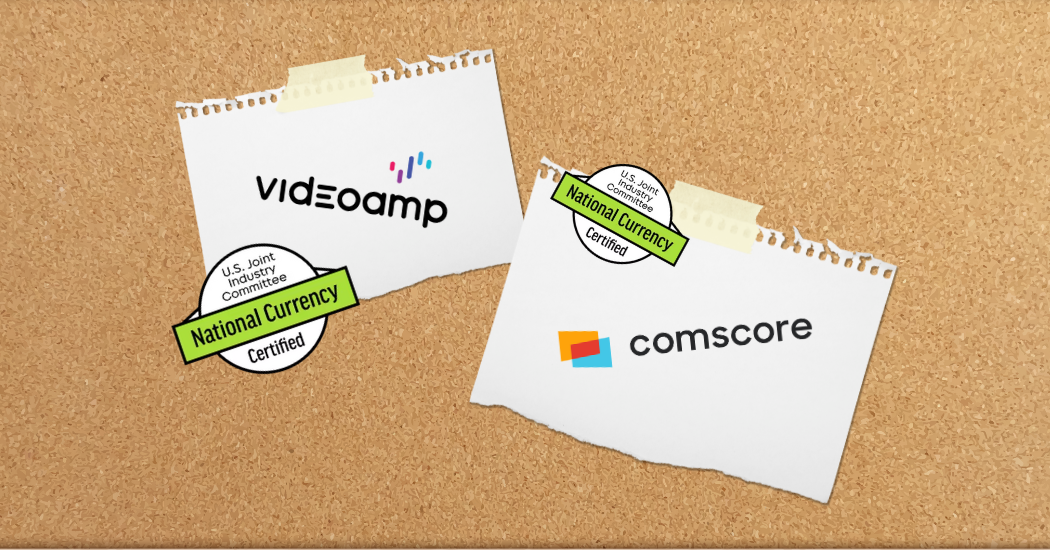Two Alternative Currencies Receive Certification in Advance of the Upfronts

On April 3, two of the leading competitors to Nielsen in the TV audience measurement space–ComScore and VideoAmp—received full certification as transactional currencies by the Joint Industry Committee (JIC). This provides a much-needed boost to both services at a critical time as the TV marketplace gears up for the 2024-25 upfront selling season. As we reported in Media Impact Report 49, The JIC had already provided both services with “conditional” certification in 2023, along with a third alternative currency, iSpot. iSpot retains the “conditional” label on their certification, but they are moving forward with the certification process and expect to become fully certified by the JIC in June. The JIC’s announcement comes on the heels of the Media Research Council’s accreditation of ComScore for both National and Local TV ratings.
The JIC put the currency providers through a lengthy data evaluation process that included 670 tests to ensure the data produced was transactable across specific currency use cases. The tests looked for data errors and verified that the providers could accurately forecast reach and frequency. The evaluation also considered the currency provider’s transparency, completeness, methodology, and stability of data. The JIC certification covers a 2-year period through the end of 2025. After that, ComScore and VideoAmp will need to be recertified every two years.
Being certified as transactional currencies by the JIC clears the way for buyers and sellers to transact their upfront deals for the 2024-25 season on ComScore or VideoAmp guaranteed audiences with the level of confidence that was previously only afforded to Nielsen ratings. However, the JIC announcement reiterated that it is still a marketplace decision about what currency will be used for upfront guarantees. As Travis Scoles, SVP of Advanced Advertising at Paramount Global and Chairman of the U.S. JIC’s Board of Directors put it, “the currencies and resulting deal structures are decided solely between buyers and sellers…” But those buyers and sellers now have options.
The fact that iSpot was not certified at this time was not a great surprise. iSpot acquired another video measurement service, 605, in September and they are still working on integrating 605’s data and methodology with their existing service. iSpot still has conditional certification as a transactional currency certification and they have only delayed their full certification until June. Assuming that iSpot will receive full certification, they are still a viable option for upfront transactions in this year’s upfront negotiations.
What is a “transactional currency?” Transactional certification means the JIC has determined that ComScore and VideoAmp data sets are accurate and representative of censuslevel data and are approved for buyers and sellers to conduct upfront negotiations and guarantees using their services. It is still up to buyers and sellers to decide which – if any – of these services to write guarantees against.
In addition to being in play for upfront transactions this year, the other huge benefit of full certification for ComScore and VideoAmp is that they will have full access to the JIC’s streaming data set when it launches next year. The streaming data will be collected from all publishers and agencies that are members of the JIC. Understanding cross-platform (Linear & Streaming) metrics like reach and frequency is one of the biggest issues that marketers are trying to solve for, especially as the video landscape continues to fragment with the proliferation of ad supported streaming platforms. While the JIC determined that the currency providers “performed strongly for linear…” they found that “improvements should be made to be transactable at scale for cross-platform.”
Put another way, while the transactional certification of ComScore and VideoAmp is good news for the industry, we still have a way to go for media measurement to catch up with the ways that people are watching video and how we as marketers evaluate that viewership.
This article is featured in Media Impact Report No. 54. View the full report here.